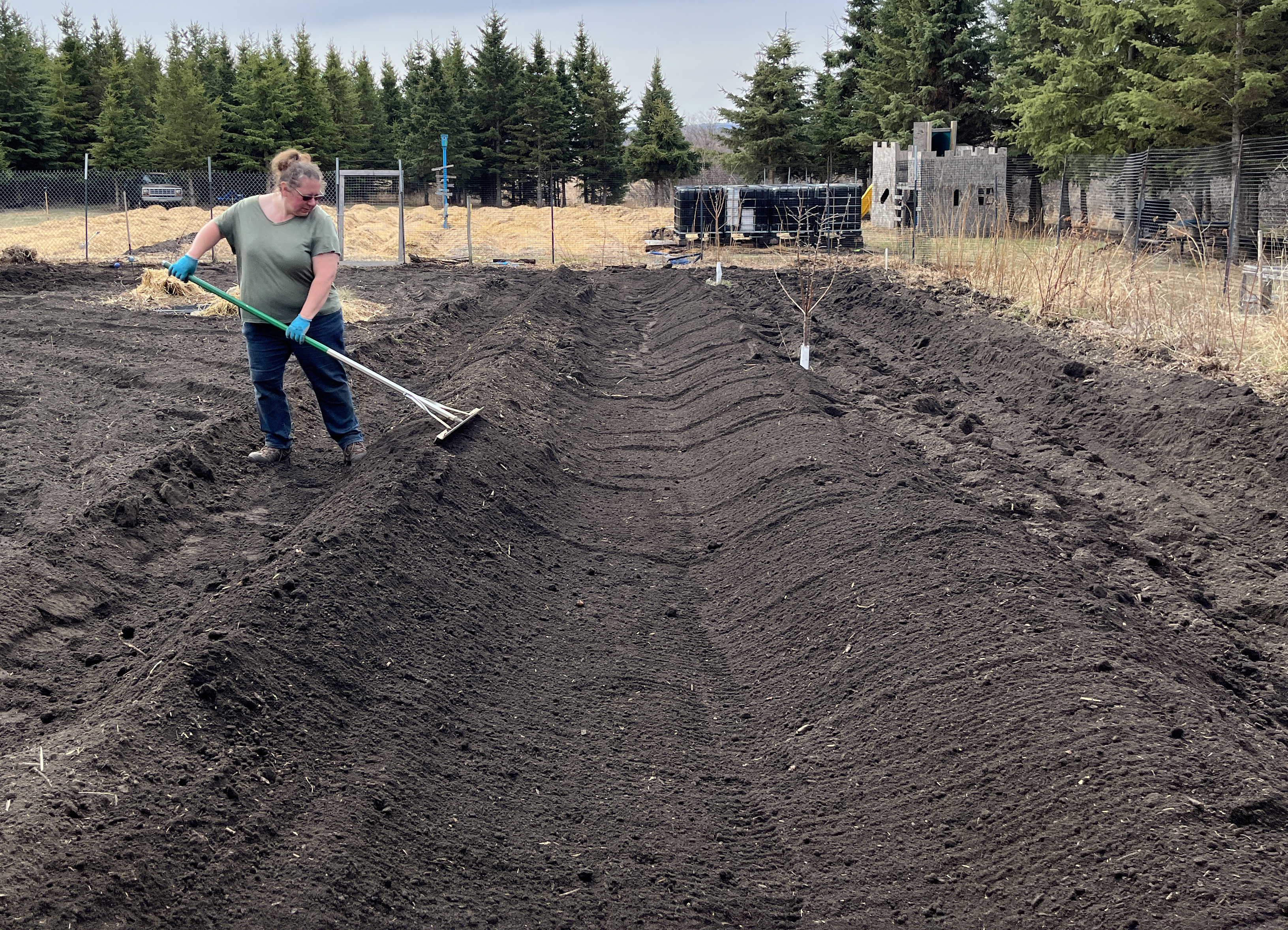
Building the pathways in a no till garden
No till gardening is a system of gardening where the soil is mulched to prevent soil erosion, conserve water and reduce the pressure of weeds. To build a no till garden, you will need permanent spaces where you will walk to access your plants. Using permanent pathways means the planting areas will not be compacted by walking or equipment.
How do you build pathways in a no till garden?
Pathways in between the rows need to be wide enough to allow access when the plants are at their mature size. Potatoes and tomatoes can get quite bushy and overlap a pathway so narrow pathways will not be accessible when these plants are at their mature height.
If you have any tools that you use to help you during harvest or planting like a wheelbarrow, wagon or small garden tractor, be sure to leave enough space to drive them down the pathway.
Don’t be too afraid to leave a wider pathway. Remember your yields are going to increase substantially so losing real estate in the form of pathways in the garden isn’t going to be a problem as you will be able to grow fewer plants in time.
If your garden is on a slope or in a wetter area, digging the pathways down a few inches below the level of the seed bed can help direct water down the hill into your garden. Use a landscape rake to pull the top soil from the pathway onto the seed bed.
Pathways get a lot of traffic on them so the mulch needs to be durable. Wood chips work well for this as they form a solid base for driving wheelbarrows or wagons over, are easier to stand on than straw and provide for easier mobiity. Straw is softer so walking on it may not be as easy wood chips. Wood chips also take a longer time to decompose so you will not have to top up the mulch as frequently as you would with straw. Just watch in a wet year as the mulch will decompose faster and will need topping up.
Once you have your planting areas and pathways built, weed your garden and water it thoroughly before mulching. Add mulch to a depth of 6" over the entire pathway. If you see annual weeds growing through, you simply need more mulch in that spot. Top it up to prevent them from growing. Perennial weeds will be more persistent and you will need to pull these before they set seed.

